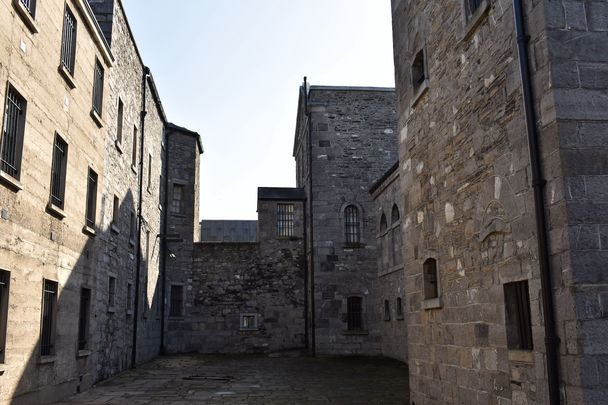Capital punishment was fully abolished in Ireland in 1990, but here are ten historic places where public executions took place
Crime in Ireland was punishable by death for centuries. These criminals were executed in public for all to see, in various ways, for various offenses. Abolished for most crimes in 1964, and completely in 1990, capital punishment is no longer legal in the Republic of Ireland.
Here are ten places in Ireland where public executions did take place at one time:
Market Square, Clonmel
At this site, William Smith O’Brien, found guilty for attempting to help incite a rebellion against the English with the Young Irelanders near Ballingarry, was sentenced to be hanged, drawn, and quartered in 1848. This was the last occasion such a sentence was handed down in Ireland, although Smith O'Brien's sentence was commuted to transportation for life.
Gallows Green, Limerick
This execution spot has a long history. It dates back to the 16th and 17th centuries when Catholic priests were hanged for their religious beliefs. Bishop Terence Albert O’Brien, for one, was hanged and beheaded here on October 30, 1651.
Gallows Hill, Kilkenny
This site was located within the county infirmary at the time. It became a spot for hanging in 1767.
George’s Hill, Dublin
Today it is known as the site of the George’s Hill Presentation Convent, dating back to 1794. However, this spot is where Christians were executed and martyred for centuries.
Harold’s Cross Green, Dublin
The name was derived from the one given to the gallows. The archbishop maintained the punishment here in the 14th century. Harold’s Cross served as an execution ground for the city of Dublin until the 18th century.
Kilmainham Common, Dublin
Kilmainham Gaol (jail) was erected here in 1786. It was known as the Irish Bastille and is a museum today. Its most famous prisoners include nationalists and freedom fighters Robert Emmet and Eamon De Valera. Most of the leaders of the 1916 Easter Rising were executed by firing squad in Kilmainham Gaol.
Knockcroghery, Roscommon
The town was named after a hanging. Originally known as Cregann, its named was changed in the 16th century after a group of Irishman who was hanged for resisting the English invasion of their town.
To mark this act of courage the village became known as “Knockcroghery” (“Cnoc na Crocaire”) or “The Hill of Hangings."
St. Stephen's Green, Dublin
A very popular spot for executions in Dublin, the convicted were imprisoned, whipped, hanged, pilloried, strangled, and burned to death. Between 1780 and 1795, 244 people were hanged.

Love Irish history? Share your favorite stories with other history buffs in the IrishCentral History Facebook group.
In front of St. Catherine’s Church, Thomas Street, Dublin
Robert Emmet was infamously executed here in 1803. He was first hanged and then beheaded when he was dead. A plaque commemorating the event can be found there today.
Wexford Bridge
A notorious massacre took place here in 1798 as thousands of local loyalists were executed by United Irishmen on the bridge in the town center.
* Originally published in April 2011, updated in May 2023.




Comments